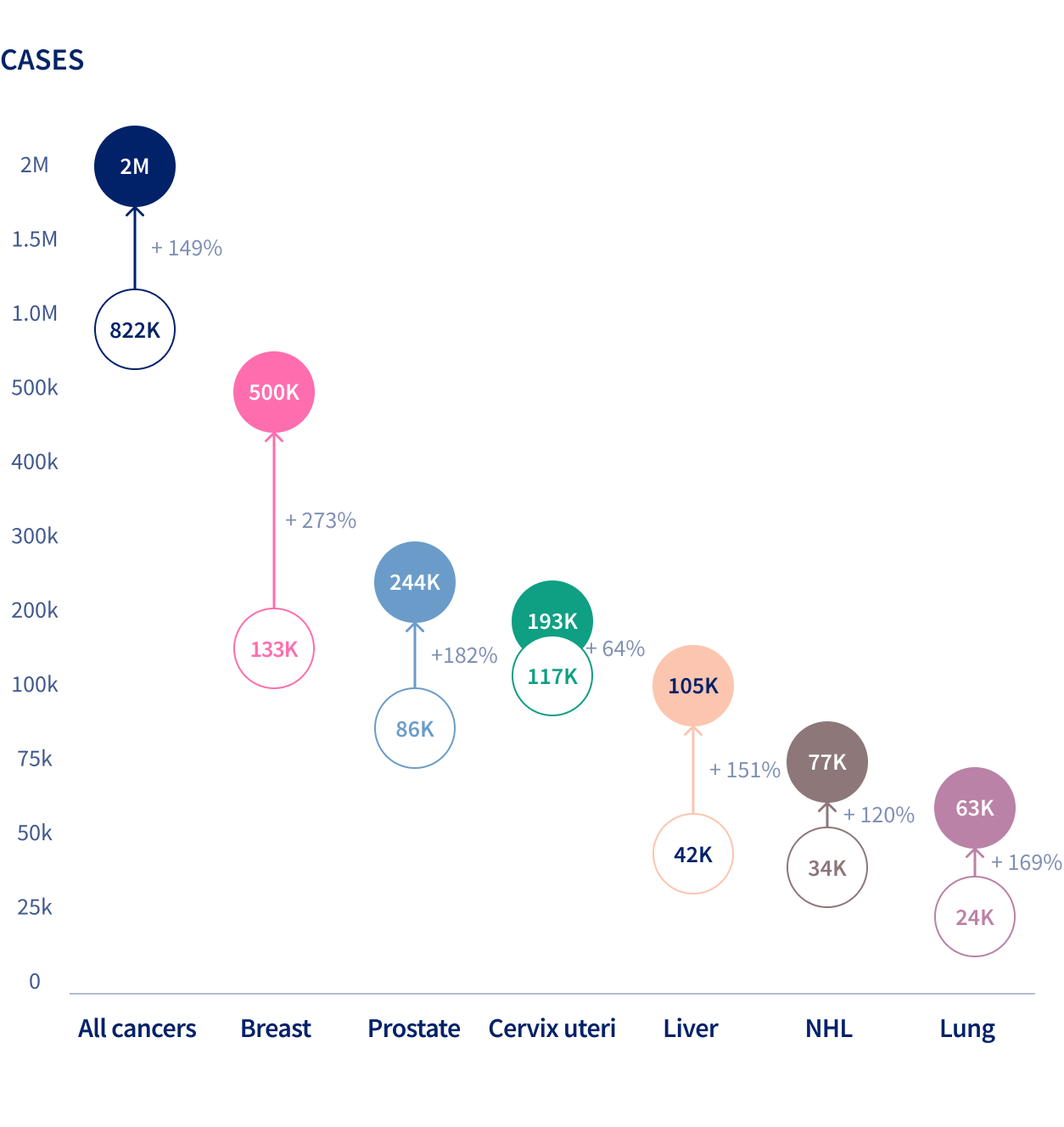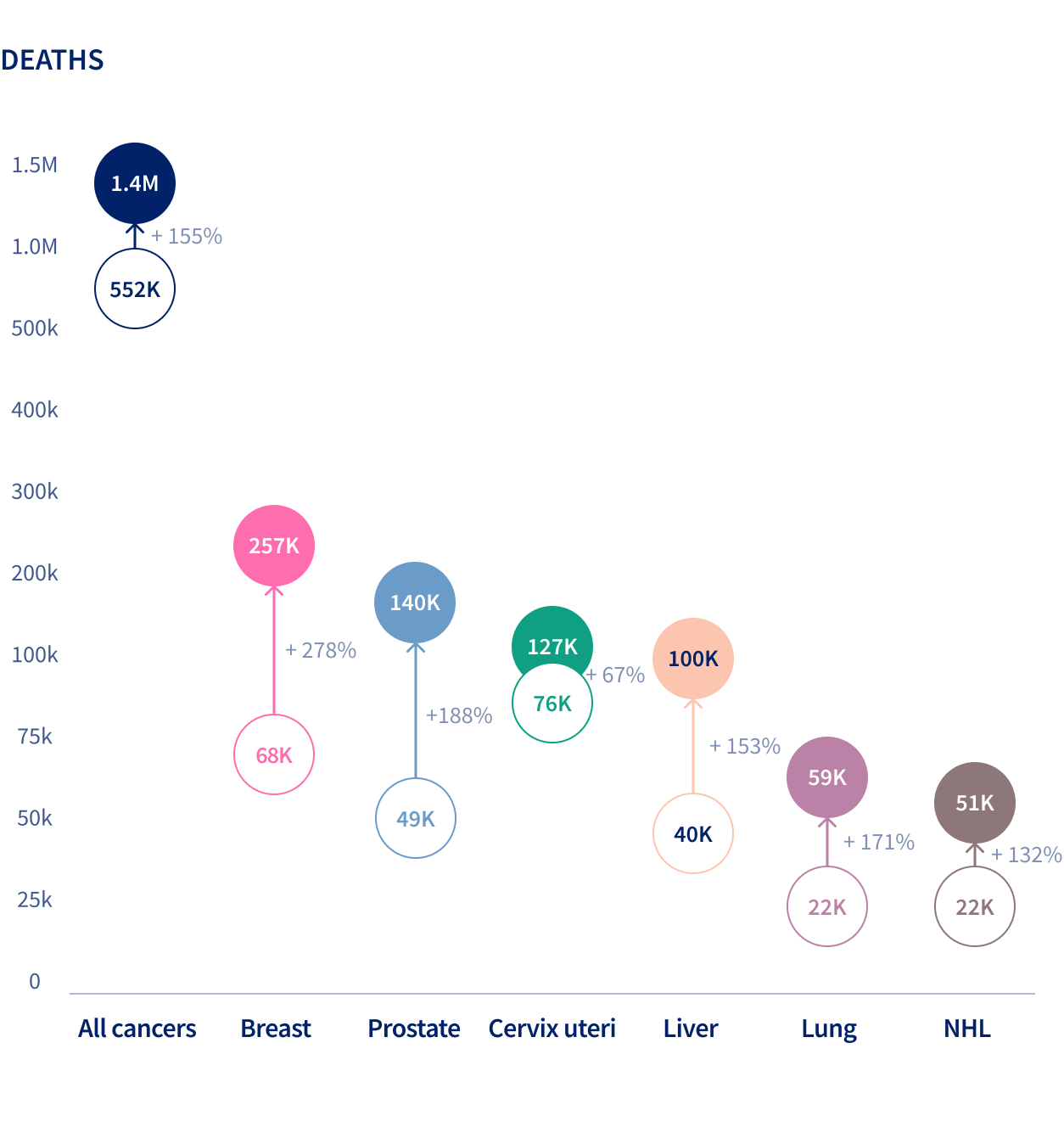Cancer in Sub-Saharan Africa
Infections account for up to 30% of cancer cases in some East African countries.
Cancer is now a major public health problem in sub-Saharan Africa, with the disease among the three leading causes of premature death (ages 30-69) in almost all countries in the region.
About 820,000 new cancer cases and 550,000 deaths were estimated to have occurred in 2022 in sub-Saharan Africa. For both sexes combined, cancers of the female breast, cervix, and prostate dominate the cancer incidence pattern (Figure 23.1) and taken together comprise two-fifths of the cancer incidence burden in the region.
Cervical cancer is the second most commonly diagnosed cancer and the leading cause of cancer death in sub-Saharan Africa.
Estimated number of new cancer cases and deaths (excluding non-melanoma skin cancer) by type in sub-Saharan Africa, 2022
These cancers also represent the top three causes of cancer mortality in the region, with cervical cancer leading with the cumulative mortality (before age 75) of 2.5% (Figure 23.2), signifying that one in 40 women will die from this cancer during their lifetime.
In sub-Saharan Africa, about 1 in 40 women are at risk of dying from cervical cancer in their lifetime.
Estimated cumulative risk (%, ages 0-74) of cancer incidence and mortality in sub-Saharan Africa for the top 15 leading cancer types, 2022
“Sub-Saharan Africa has 24% of the global disease burden, yet only 3% of the world’s health care workers.”
The importance of these cancers is also reflected in terms of the leading types of cancer at the country level, with prostate cancer ranking first as the most frequently diagnosed cancer in men in 40 of the 48 countries, while in women, breast and cervical cancer rank first in 26 and 22 countries, respectively (Map 23.1).
There are however marked geographic variations in the risk of other important cancers (e.g., Kaposi sarcoma and liver cancer in men), in part reflecting variations in the prevalence of the underlying risk factors. According to data from population-based cancer registries (PBCR), many of the region’s cancer types are on the rise, including cervix, female breast, and prostate. The cancer burden is expected to double in the constituent countries within three decades solely due to the aging and growth of the population (Figure 23.3). To inform national implementation of cancer-control strategies and to monitor progress and impact – including scaling up the World Health Organization’s (WHO) signature initiatives – sustainable investments in PBCR as the unique source of cancer incidence and survival remains critical.
Cancer cases and deaths in sub-Saharan Africa are projected to rise by about 150% by 2050.
Estimated number of new cancer cases and deaths (excluding non-melanoma skin cancer) from 2022 to 2050 in sub-Saharan Africa


Footnote
Abbreviation: NHL, non-Hodgkin lymphoma